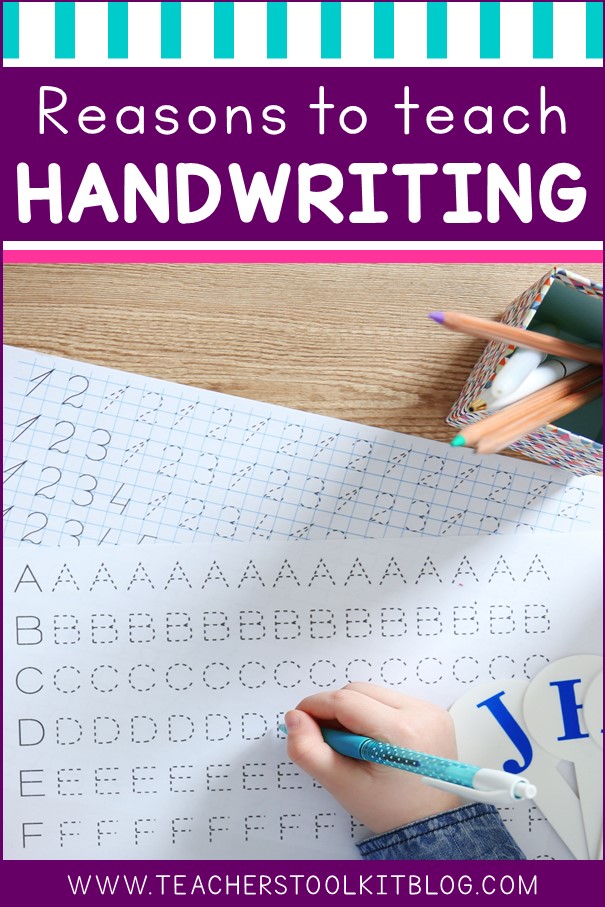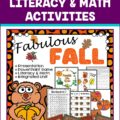Technically, text evidence deals with factual information. In education, it’s very often used in the context of backing up or proving a claim. Since factual, nonfiction text is a large part of what our students read in school, it’s imperative that they know how to find evidence from text sources.
Even very young, beginning readers can learn how to find evidence from the text to back up a claim. Picture books are a great place to start teaching very young students how to find evidence, make predictions, and sequence events.
If you’d like to read more on teaching reading comprehension, check out this blog post.
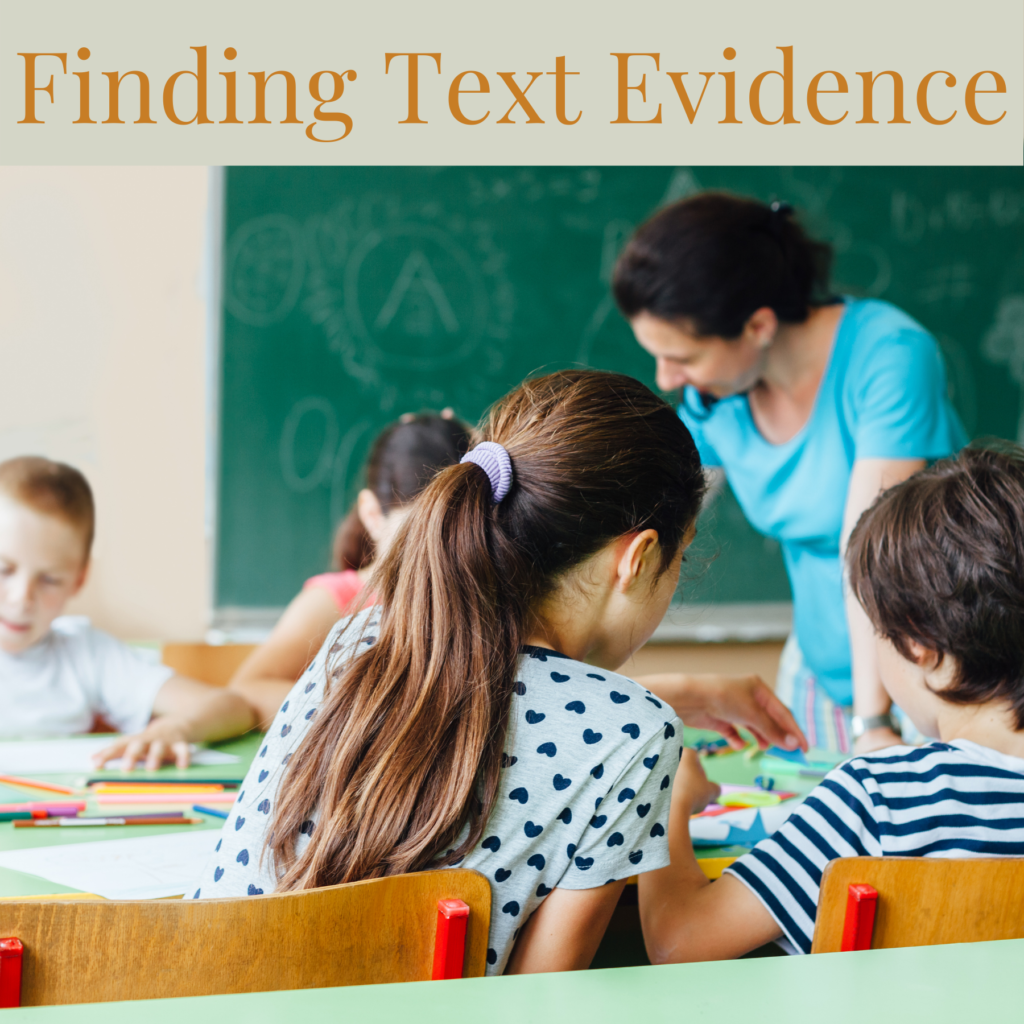
Teaching text evidence to beginning readers
We may not think of looking at picture books as reading. But students can look at pictures and “read” a story.
Make sure you use books with very obvious, strong illustrations. Go through the book page by page with the students and ask them what’s happening on each page. After they’ve done this, ask them what the main idea of the story is, or what’s going on with the characters.
Next, pose a question about the story, making sure it has a specific answer in the book. Have them show you what page the answer is on, or point to the picture that shows it.
Use this technique as many times as you can, both in small groups and individually. Students will be engaged and will learn that you can back up your “claim” with evidence.
strategies for older students
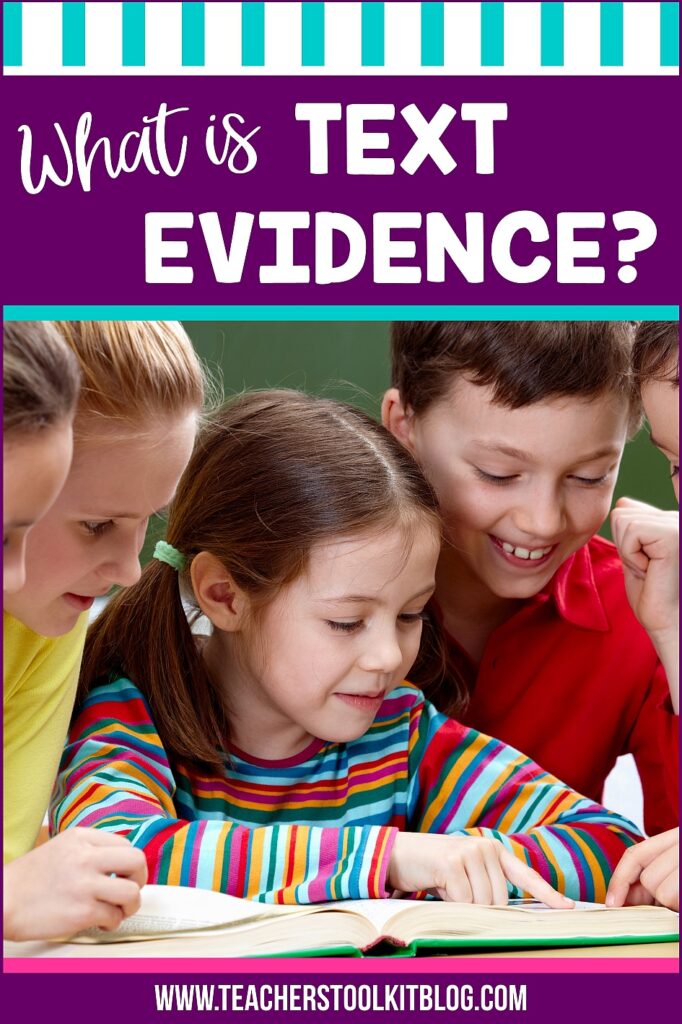
Emerging readers with higher-level reading abilities can use leveled reading passages. They’re ready to begin actually using text instead of pictures.
A fun way to do this is to to find printable reading passages and place them in a page protector sheet. They can highlight, underline, and circle specific passages on the page protector and the sheets are easily wiped off afterward.
Another way to use this strategy is to choose reading passages that showcase a specific format, such as sequencing or problem solving. Ask questions such as “What do you think happened next?” or “How did Susie solve her problem?” Then have students write the answers right on the protector sheet. They can underline or circle the parts of the text that provide evidence for their answers.
If you’d like to see an example of text evidence with a sequencing activity, my Pumpkin Life Cycle resource is designed for young readers. It contains a student reader and sequencing cards for students to practice reading for evidence and then using that evidence to put the cards in order.
This resource also has writing/center activities, making it perfect for small group or independent work.
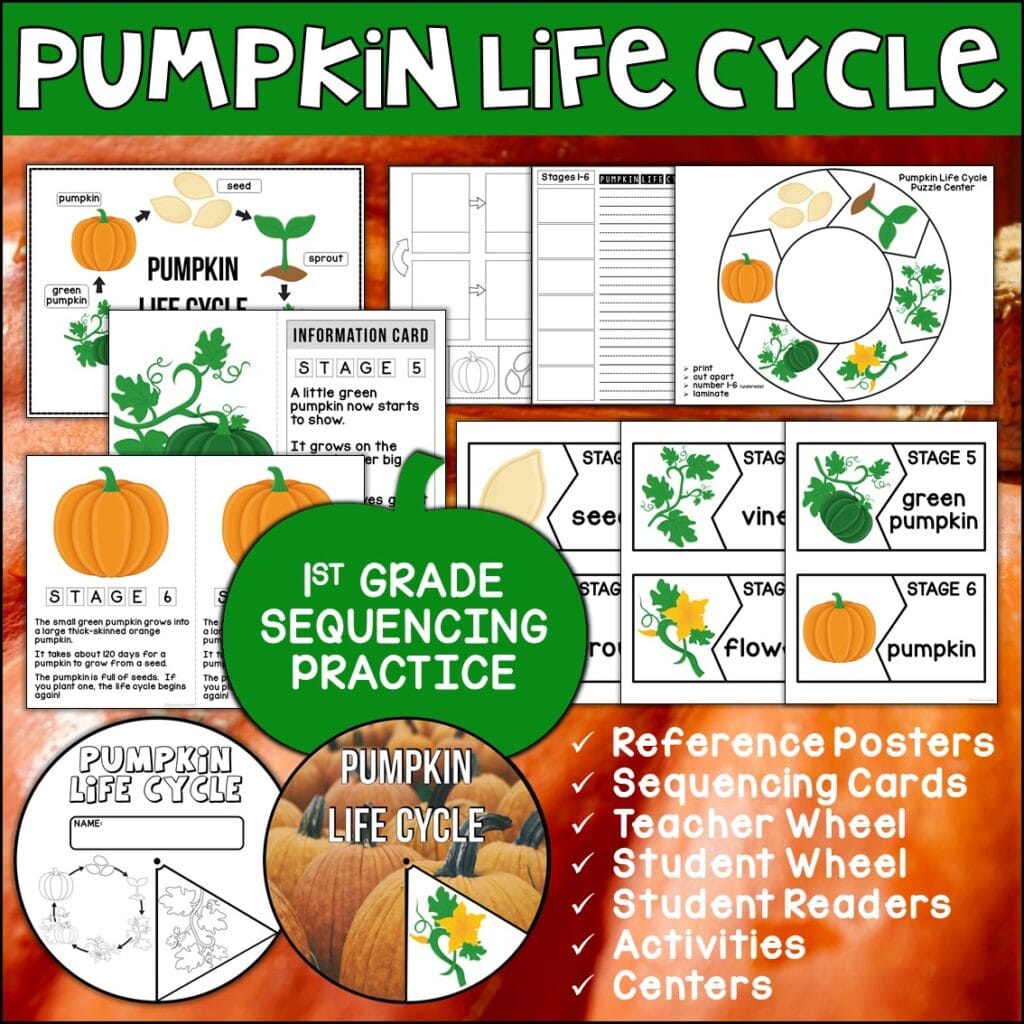
If you try any of these strategies, please let us know how it went!
